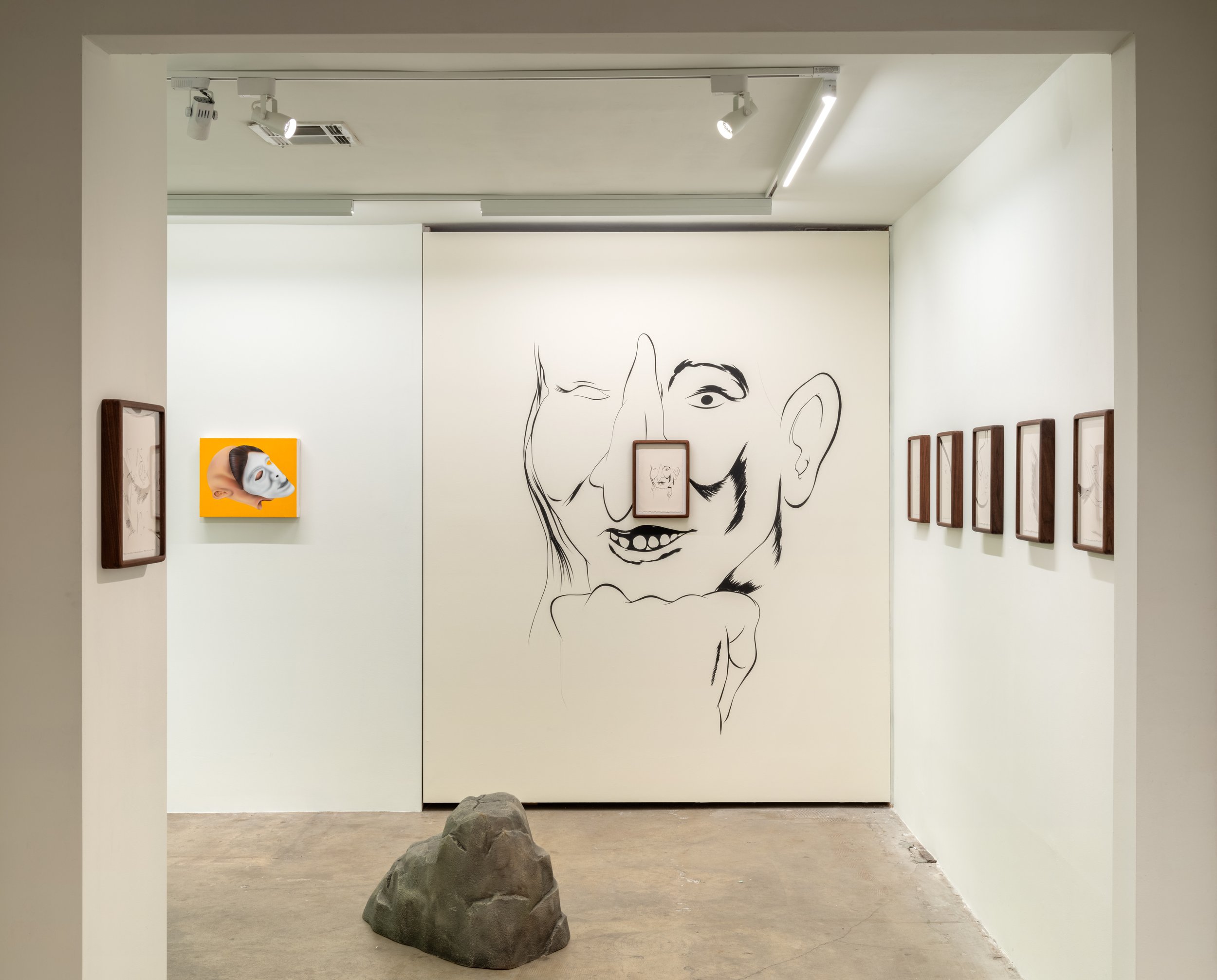Aaron Elvis Jupin
works exhibitions news about
possibility of misunderstanding
May 18 - July 27, 2024











exhibition text
Moskowitz Bayse is pleased to present Possibility of Misunderstanding, an installation of new paintings, drawings, and sculpture by Los Angeles-based artist Aaron Elvis Jupin. The exhibition is the artist’s second with the gallery, and will be installed in our Viewing Room May 18 - June 29, 2024.
In Possibility of Misunderstanding, Jupin imbues the gallery’s exhibition space with a kind of magic typically reserved for the artist’s studio. Walls painted by the artist expand a drawing to larger than life scale, only here to serve as an armature on which framed drawings hang; when the exhibition ends these murals will be painted over, erased like pencil marks on a page. Much of Jupin’s work hinges on this sort of tongue-in-cheek befuddlement. Humor vacillates from laughter to derangement and silly often stands on its head. Even in the exhibition title there is a kind of paradoxical hopefulness expressed in the word possibility when it is met with misunderstanding.
Masks are woven throughout the exhibition as a recurring trope, standing as a compelling symbol that transcends its historical roots to embody a spectrum of meanings and interpretations. Across contexts, masks serve as liminal spaces, blurring the boundaries between reality and illusion, concealment and revelation. Jupin uses the mask as a means to backdoor into figuration, harnessing its ambiguity to explore themes of identity, obfuscation, and the interplay between fact and fiction. From the photographs of Ralph Eugene Meatyard and Cindy Sherman or the films of Paul Mccarthy and the paintings of James Ensor to the funerary rites of ancient Egypt and the movie that helped launch Jim Carey’s career, masks have forever served as a deep probe into far off corners of the mind.
Originally conceived as an exhibition of drawings, it was in the act of making these works that ideas snowballed into the gesamtkunstwerk that became Possibility of Misunderstanding. For the painter, drawing is often the genesis of creativity; it is where one can see, in its most raw state, the mind forming ideas. In Jupin’s drawings the first impression is one of pure confidence, like the decisive mark of Egon Scheile–his angular marks in lead are akin to Jupin’s sinuous lines in ink. Close inspection reveals that Jupin has intentionally left a partially erased world of unresolved forms in pencil; while he easily could have obliterated all traces of past marks reconsidered, this would contradict the essence of drawing in the first place.
The impulse to leave drawings open ended can also be found in the artist’s paintings. Building upon airbrush techniques he has deployed in the past, he has here incorporated oil sticks to his process. These two disparate mediums thrust cleanliness and messiness onto the same surface, a kind of rebellion against the slick photorealism commonly associated with airbrush. Across works, Jupin leaves an uncanny amount of empty space that encroaches from all sides of the picture plane, conspicuously deleting backgrounds and leaving objects intentionally out of context. This deconstruction, simultaneously jarring and generous, leaves it to the viewer to complete the narrative of each picture. In an age overrun with fixed search engine results and algorithmically determined content, these works beckon us to find the pilot light and turn the dial.
Across Jupin’s oeuvre, the question of why tends to be answered with another question, and the only way to contend with this feedback loop is by probing our own matrix of ideas. Whether through the striking simplicity of line work in a drawing or the spatial void into which an arresting object is precariously situated, the artist offers the viewer a compelling network of open ended visual spaces that give pause, inviting unraveling notions to weave with a flood memory that imaginatively fills this emptiness.












